Bighorn sheep are large mammals native to North America, and are most famously known for their high-impact collisions. Males have large, curled horns that they use to battle with one another over breeding rights.
As their name suggests, their horns can be quite large, with some weighing over 30 lbs. or more! There are three different subspecies of bighorn sheep, the Rocky Mountain subspecies, the Sierra Nevada subspecies, and the desert subspecies. Read on to learn about the bighorn sheep.
Description of the Bighorn Sheep
The males and females of this species are pretty drastically different in appearance. Males can grow much larger and heavier than females. The males weigh up to 315 lbs. and stand up to 41 in. tall at the shoulder.
On the other hand, the females weigh up to 201 lbs. and stands up to 35 in. tall at the shoulder. They are also generally much more slender than males, who are quite muscular. The males are also the only individuals with the famously large, curled horns.
Interesting Facts About the Bighorn Sheep
Bighorn sheep are imposing creatures, and can be quite impressive to see in person! There is so much you can learn about these animals. Here are some fun facts below!
- Horns and Such – While female bighorn sheep lack the characteristic thick, curled horn that the males have, they aren’t completely lacking in headgear. Female sheep, called “ewes,” have short horns that are slightly curved. Male sheep, called rams, need thicker horns to protect themselves during their battles with one another.
- Social Sheep – Though the most famous behavior of the bighorn sheep is their dramatic battles, this is not always the norm. During the breeding season, males do fight one another to create a “pecking order” of breeding rights. However, outside of the breeding season, bighorn sheep live in large groups without a specific dominant male.
- Social Structure – Males are not the only members of a herd that have a dominance hierarchy. While females do not have extensive and violent battles like the males do, they do have a social structure within their herds. Some minor fighting between females occurs, but seniority typically rules in the female hierarchy.
- Sheep v. Sheep – Even though fighting can be somewhat dangerous, other bighorn sheep are not nearly as much of a hazard as domestic sheep. No, they don’t fight with domestic sheep, but bighorn sheep can catch diseases spread by domesticated sheep. Some of the most problematic illnesses are pneumonia and scabies, which can kill the wild sheep.
Habitat of the Bighorn Sheep
The habitat of this species depends heavily upon the subspecies. Different subspecies have drastically different habitat preferences. Both the Rocky Mountain subspecies and the Sierra Nevada subspecies prefer living in cooler climates, particularly up in the mountains. On the other hand, the desert subspecies lives, you guessed it, in the desert! Despite some subspecies living in mountains and cold climates, they prefer areas without extensive snowfall.
Distribution of the Bighorn Sheep
These impressive sheep range across portions of the western United States, as well as into Canada and Mexico. The Rocky Mountain subspecies lives throughout the Rocky Mountains in Canada and the United States, as well as various foothill regions in the northwestern portions of the United States.
The Sierra Nevada subspecies also lives in its namesake mountain range, the Sierra Nevada Mountains in California. Finally, the desert subspecies makes its home throughout various desert regions in the Southwest United States and into Mexico.
Diet of the Bighorn Sheep
Like all sheep, bighorns are herbivores, which means they eat plants. This species will feed on a wide variety of plant species, including grasses and small shrubs. Another important part of their diet is natural mineral sources, which their usual grasses and plants cannot provide. To supplement their needs, these sheep seek out naturally produced salt licks.
Bighorn Sheep and Human Interaction
Historically, humans heavily hunted these sheep as trophies, primarily because of their large horns. Much like American bison, hunting of this species pushed them to the brink of extinction. They have since rallied – brought back with protection and breeding programs.
Their initial decline, and continued struggles, is also based in indirect human contact. Domesticated sheep spread diseases to the wild sheep, causing entire herds to die off. The IUCN Red List provides additional information about the continued efforts to protect this species.
Domestication
Humans have not domesticated this species in any way. Humans bred domesticated sheep from a different species of sheep called the mouflon.
Does the Bighorn Sheep Make a Good Pet
No, bighorn sheep do not make good pets. They are wild animals, and are not domesticated in any way. Males of this species can be quite dangerous, and could seriously injure or kill if threatened.
Bighorn Sheep Care
These sheep live and reproduce readily in a zoological setting. Zoos provide them with rocky habitats, or artificial platforms to jump and climb on. Their diets are relatively similar to other sheep, and zookeepers add additional hay, fresh browse, and other plants to supplement pelleted diets. Because they are social, these sheep live in groups of several animals.
Behavior of the Bighorn Sheep
Bighorn sheep live in large herds with many animals. There is no division of herds by sex or age, but small dominance hierarchies develop amongst animals, particularly during breeding time.
Herds will generally migrate based upon the season. In the wintertime, the sheep will migrate to lower, warmer elevations. In the summertime, the sheep return to higher elevations in the mountains.
Reproduction of the Bighorn Sheep
Female sheep all breed during the yearly rut, which is the breeding season. After mating, the females have a six-month gestation period before giving birth to a single lamb. Twins do happen occasionally, but this is more rare than in domestic sheep.
The newborn lamb can stand and walk within an hour of its birth. Weaning happens when the lambs are between four months old and six months old, and they reach sexual maturity at different times, usually depending on how much they grow.

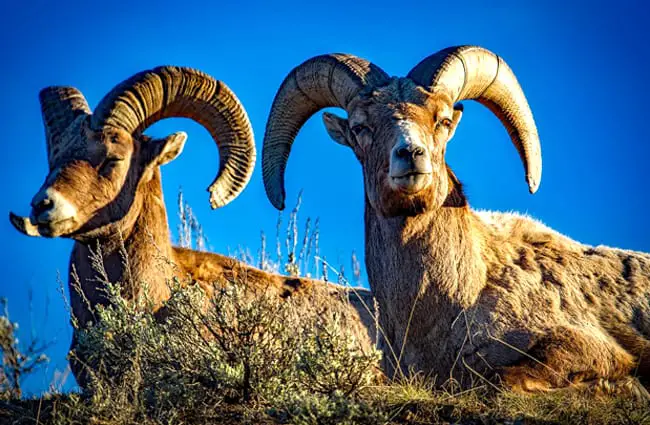
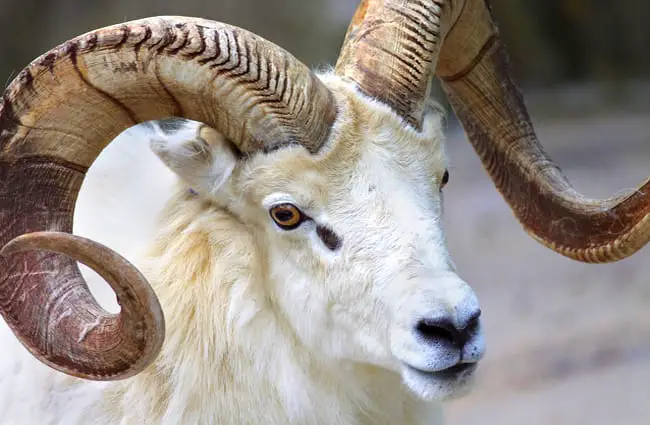
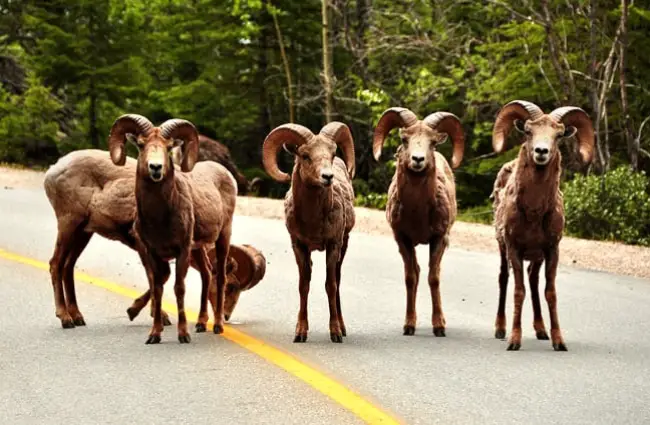
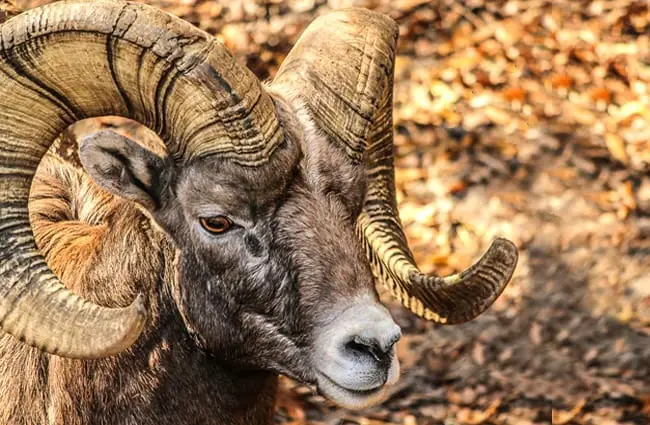

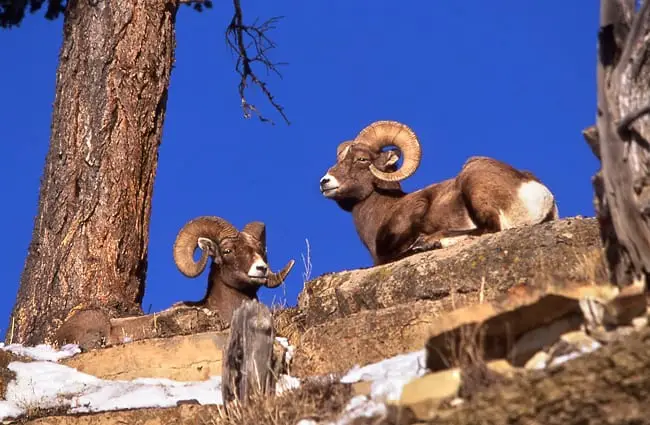
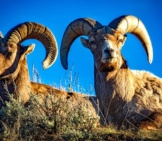



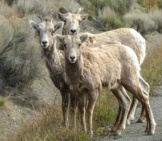
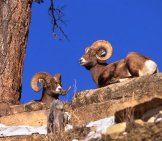
![Red Angus Closeup of a beautiful Red Angus cowPhoto by: U.S. Department of Agriculture [pubic domain]https://creativecommons.org/licenses/by/2.0/](https://animals.net/wp-content/uploads/2020/03/Red-Angus-4-238x178.jpg)












![Red Angus Closeup of a beautiful Red Angus cowPhoto by: U.S. Department of Agriculture [pubic domain]https://creativecommons.org/licenses/by/2.0/](https://animals.net/wp-content/uploads/2020/03/Red-Angus-4-100x75.jpg)

